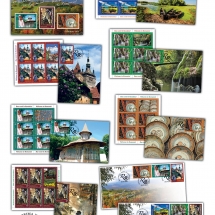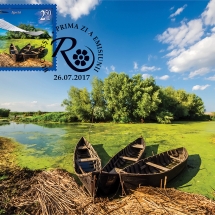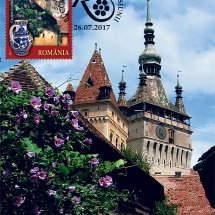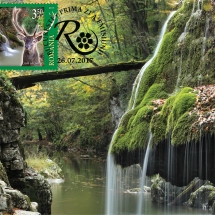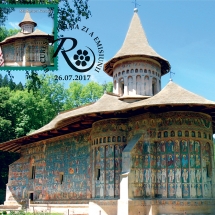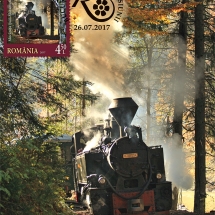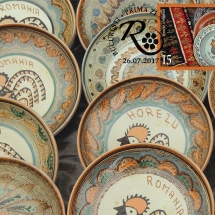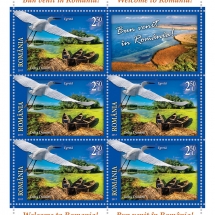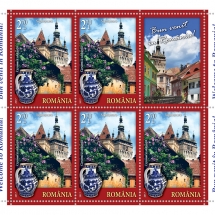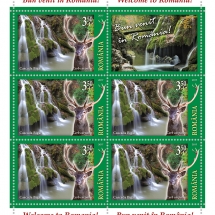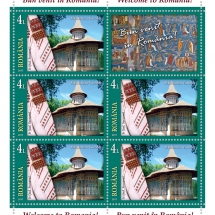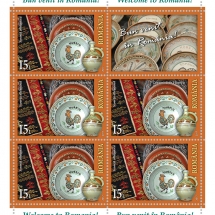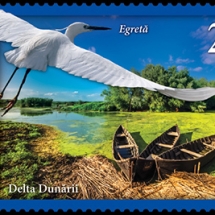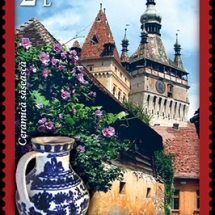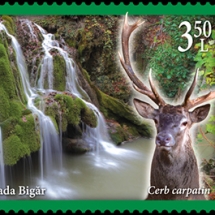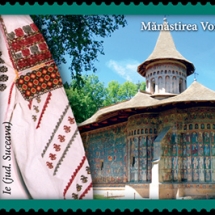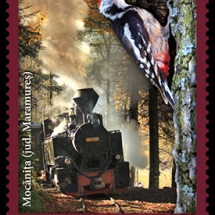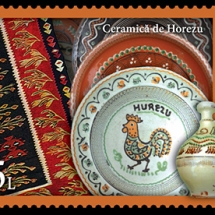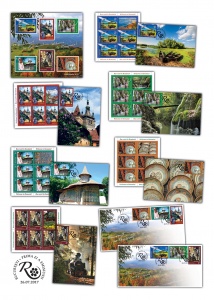 With the latest postage stamp issue Welcome to Romania! we propose you to discover and admire once again the treasures of nature, of Romanian culture and architecture. We invite you to our home, in our country, to enjoy all the splendor next to us.
With the latest postage stamp issue Welcome to Romania! we propose you to discover and admire once again the treasures of nature, of Romanian culture and architecture. We invite you to our home, in our country, to enjoy all the splendor next to us.
The postage stamp issue, Welcome to Romania is available from Wednesday, July 27th, 2017, in Romfilatelia stores in Bucharest, Bacau, Brasov, Cluj-Napoca, Iasi and Timisoara.
It is holiday time and one of the most interesting and surprising states of Europe that can offer you many pleasant moments of spending time, is Romania. The words that best describe the very essence of our country are: genuine and unique, being really rich in history and traditions, art and culture, places where nature reveals in its magnificence.
Romfilatelia, under the motto „ a world in a stamp”, invites connoisseurs to take an imaginary trip, through beautiful places from our country.
The stamp with the face value of Lei 2.50 reveals a landscape from the Danube Delta. It was incorporated into the UNESCO World Heritage Site in 1991 as the Biosphere Reserve, comprising one of the world’s largest wetlands with over 400 lakes, oak and ash forests, sand dunes and wild beaches on the deltaic seaside. This is home for the Small Egret (Egretta garzetta), a species that nests in fresh, brackish or saline wetlands and shows a preference for shallow waters where fish are concentrated in pools or at the water’s surface.
The stamp with the face value of Lei 2.70 depicts the Clock Tower in the town of Sighisoara, the most massive of the nine defence towers that have been preserved up to now. The whole city, one of the few medieval citadel towns still inhabited, appears to the visitor as an open-air museum, attracting hundreds of thousands of tourists year after year. It is paired with Transylvanian Saxon pottery, which stands out by its ornamental details, in a generous repertoire of decorative elements.
The Bigar Waterfall, which is part of a protected area, located in Caras-Severin County is illustrated on the stamp with the face value of Lei 3.50. Its strong spring is fed by an underground watercourse that runs through the Anina Mountains. After about 200 m, the spring water (rich in limestone) flows into the Minis River from a rocky threshold, forming a spectacular waterfall.
The beauty of this area is represented by the majestic Carpathian red deer.
The stamp with the face value of Lei 4 shows the Voronet Monastery, a medieval monastery from Gura Humorului town. Often known as the “Sistine Chapel of the East”, the frescoes at Voronet feature an intense shade of blue known in Romania as “Voronet blue.” It is one of the famous painted monasteries from Southern Bukovina, in Suceava County. The monastery was constructed by Stephen the Great in 1488 to commemorate the victory at the Battle of Vaslui. Alongside the monastery we find the Romanian blouse with a patter specific to the Suceava region.
The stamp with the face value of Lei 4.50 shows of the Mocanita and the splendid landscape through which it makes its way. A mocanita is a narrow-gauge railway in Romania, found most notably in Maramures, Transylvania, and Bukovina. Archetypely, they are situated in mountainous areas and the steam locomotives operating on them can also be referred to as mocanitas. These railways were built for cargo and passenger services but fell into disrepair over the years. Some are now being rehabilitated for the purposes of tourism, offering travellers a chance to take a trip through the mountainous nature. One of the most recognizable bird is the middle spotted woodpecker, so called “the forest doctor”.
Horezu ceramic making, inscribed in 2012 on the UNESCO Representative List of the Intangible Cultural Heritage of Humanity, is a unique traditional craft. Handmade in the northern part of Valcea County, Romania, they reflect generations of knowledge and craftsmanship. Men select and extract the earth, which is then transformed into a clay body from which the potters of Horezu produce a red pottery. The women decorate the objects using specific techniques and tools to draw traditional motifs. Their skill in combining decoration and colour defines the personality and uniqueness of these ceramics, illustrated on the stamp with the face value of Lei 15. Alongside the Horezu pottery it is exemplified a traditional hand-woven rug whose colour and pattern is specific to the area of Oltenia.
The six stamps of the issue Welcome to Romania are completed by a set of six maxicards and a set of 2 covers with the first day postmark, and as page composition were used the sheet of 32 stamps the minisheet of 5 stamps + 1 label and the block of 6 imperforated stamps.
Romfilatelia thanks the photographers George Avanu, Ioana Chirita, Constantin Dina, Valeriu Leonov, Silviu Matei, Daniel Petrescu and Lucian Tudose for support given for the creation of this postage stamp issue.
For further information, please contact the Public Relation Office:
Tel: 021 / 337 24 42
dana.dumitrascu@romfilatelia.ro



